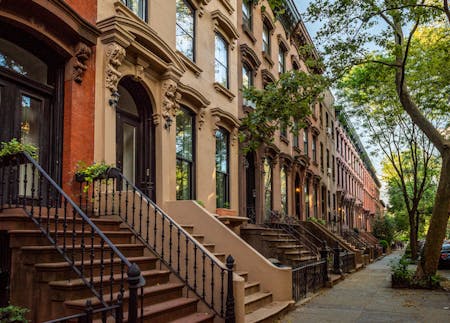Fixed Rate, ARM, 203K… Understanding Different Mortgage Options
By Rebecca Benison on December 11, 2019
You’ve scrimped and saved, built a steady stream of income, and now feel ready to start house hunting... Maybe.
While having a sizable savings account is a great first step in the homebuyer journey (and an accomplishment in itself!), there are a number of other factors to consider. Namely, how will you finance the majority of the purchase? Unless you have enough cash on hand to buy a home outright, you’ll need to find a mortgage option that fits your needs.
Below are a few popular mortgage types to consider. As you’ll see, your own goals will have a major impact on what type of financing is right for your situation.
Fixed Rate Mortgage
What is a fixed rate mortgage? It’s a home loan in which the interest rate is consistent throughout the life of the loan. So, if you sign up for a mortgage with 3.9% interest rate, that’s how much you’ll pay each month over the course of your mortgage.
For buyers, a fixed rate mortgage makes sense if current interest rates are low and you plan to stay in a home long-term. Locking in that low interest rate (when possible) can save hundreds of thousands of dollars over the life of a loan. However, if you purchase a home when interest rates are higher, it can conversely mean you’ll end up paying more in the long run, unless you refinance later on.
Adjustable Rate Mortgage
An adjustable rate mortgage (ARM), or variable rate mortgage, is a home loan in which the interest rate changes over time. There’s typically a period in which you can expect a low fixed interest rate, but it will eventually adjust on a regular basis (usually yearly, but sometimes monthly).
Within ARM mortgages, there are a few different options. For example, a 2/28 ARM mortgage features a fixed rate for two years, followed by a floating rate for the remaining 28 years. In a 3/27 ARM loan, the first three years are fixed-rate, while the remaining 17 are variable.
Another option is a 5/1 ARM that carries a fixed rate for five years, followed by a variable rate that adjusts every year after that (the "1" represents the time period of each year). A 5/5 ARM has a fixed rate for five years, and then is followed by a rate change every five years following, whereas a 5/6 ARM adjusts every six months after that initial five year period ends.
When it comes to variable rate mortgages, do your homework before making any selection. It might make sense to go with one of these options if you’re not planning to keep a home for a long period of time. You can certainly save by having a low fixed rate for a few years, as long as you’re comfortable with the risk of holding on to the property once the variable rates kick in.
FHA Rehab Loan
An FHA 203(k) Rehab Loan, also known as a Fixer Upper Loan, helps homebuyers purchase homes that are in need of repair by including renovation costs in the amount borrowed from a lender. Rather than buying a house and then having to lay out more money for repairs afterward, the cost of repairs is looped into the mortgage.
A rehab loan is a Federal Housing Administration-backed finance option. By choosing a house in need of repairs, buyers can get a better deal as long as they’re committed to making the required fixes. The loan application process is more involved than a traditional mortgage since it requires estimates on repair costs, and a plan to get the renovation completed within six months of purchase.
For ambitious buyers who don’t have the funds to purchase their dream homes off-the-bat, a rehab loan can get them where they want to be. However, don’t underestimate the planning and expense involved in repairing a home with significant damage. Costs can always end up higher than initial estimates, and timelines can be delayed due to unforeseen circumstances. Make sure you’re really ready (emotionally and financially) before committing to this type of purchase.
VA Home Loan
A Veteran Affairs Home Loan (VA Home Loan) is federally-backed through the United States Department of Veteran Affairs. The VA Home Loan program was established to help returning veterans settle down and build their families in homes of their own.
Whereas most home loans require some down payment, VA Home Loans can be obtained with 0% down, and have much less stringent credit requirements. Interest rates tend to be low, since there’s less risk for lenders with government-backed funding.
There are a number of restrictions, however. A VA Home Loan can only be applied to a primary residence, so for buyers who are considering investment properties or vacation homes, a VA Home Loan would not work in those instances. There are also requirements related to length of service, and restrictions on how much can be borrowed. Veterans and surviving spouses should do their research ahead of time to make sure they qualify.
Choosing the Right Mortgage for Your Home Purchase
Ultimately, there are a number of factors that will determine which home financing option is right for your circumstances. Are you looking for a forever home, a quick flip, a long-term investment, or something else?
In addition to doing your due diligence in researching home loan options, also make your plans known to your real estate agent and mortgage broker so they can provide helpful guidance on which options are right for you. It also can’t hurt to pursue a few different pre-approval types to cover all bases. You might just end up falling in love with a fixer upper!











